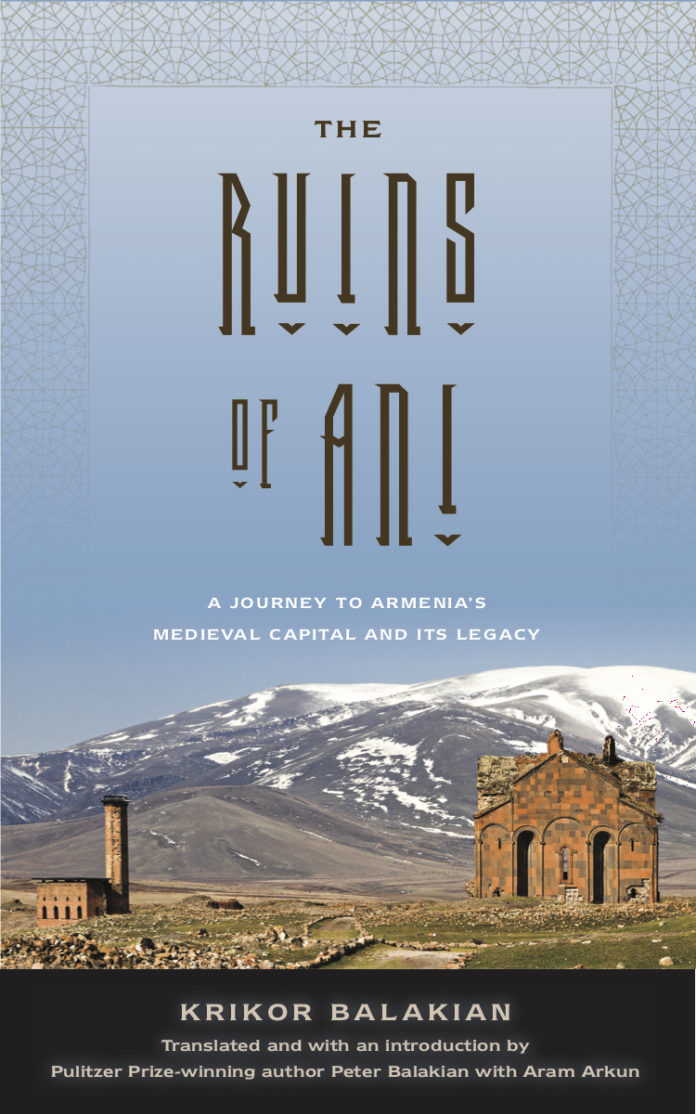The Ruins of Ani: A journey to Armenia’s Medieval Capital and its Legacy
By Krikor Balakian, Translated and edited by Peter Balakian with Aram Arkun
By Mardean Isaac
In June 1909, Krikor Balakian, a young Armenian priest, undertook a pilgrimage to the ancient city of Ani. The Ruins of Ani, his record of this trip, has now been translated into English by his great-nephew, the Armenian-American poet Peter Balakian, who also contributes an incisive introduction.
Peter also co-translated (with Aris Sevag) Armenian Golgotha (reviewed in the TLS, August 7, 2009), his great-uncle’s sprawling eyewitness account of the Armenian genocide — at the outset of which, in 1915, Krikor was arrested, enduring four years of turmoil before escaping to Germany.
At its peak in the tenth century, Ani was a “rich and mercantile” capital with a landscape featuring “fortified walls, marvelous royal palaces and princely mansions.” The city exemplified the excellence of Armenian architecture, the influence of which extended to European gothic styles.







